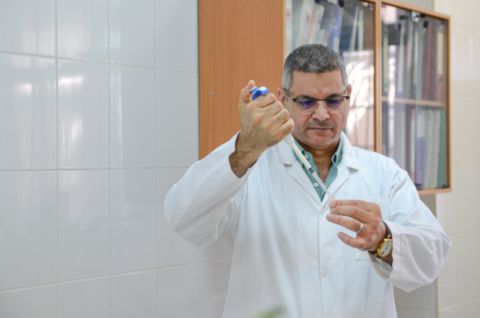Professor of the Department of Technology and Organization of Catering of the SUSU Institute of Sport, Tourism and Service Sobhi Ahmed Azab Al-Suhaymi, together with his colleagues from Egypt, the UAE and Poland, developed and substantiated a new technology of producing white cheese resistant to fungal and bacterial infections. The result was published in the famous Toxins international journal.
Modern dairy products market dictates the conditions for modern cheeses to remain safe for as long as possible and retain their commercial taste.
Adding preservatives and antibiotics is a practice of the past. Today the emphasis is put on probiotics. For example, Lactobacillus paracasei has not only antibacterial but also antifungal properties. Let us remind you that infection of cheese with a fungus can lead to the formation of aflatoxins (dangerous carcinogenic substances) in it.
However, its application may have an ambiguous effect on the appearance and taste of cheese.
How can Lactobacillus microorganisms help fight harmful bacteria and fungi? They produce bacteriocins, substances that destroy “unwelcome guests” (such as Staphylococcus aureus) allowing lactobacilli to win the fight.
Professor Sobhi and his colleagues contemplated on whether it would be better to add lactobacilli (MG847589 Lb. paracasei strain) to white cheese, or the bacteriocin substances they produce, or perhaps both at once – but in what proportion?
At the same time, one of the important goals was to preserve the texture and porous structure of cheese: real white cheese should have holes in it!
Four combinations of lactobacilli and their bacteriocins were developed. The cheeses obtained during the experiment were examined using an electron microscope, and their texture was analysed according to international standards (this is important if we need “holes”).
As a result, a sample that can be stored for up to 45 days in the refrigerator and remain resistant to Staphylococcus aureus and other dangerous bacteria was obtained. At the same time, slices of cheese were deliberately treated with pathogens, but these did not survive. The samples also have a small number of aflatoxins, which means that fungus (mycoorganisms) did not develop in them.
The optimal ratio of MG847589 lactobacilli beneficial strain and bacteriocins produced by it was found, which allows to minimize the contamination of white cheese with pathogens dangerous to humans, and at the same time preserve its taste, colour and porosity (holes) – so that the consumer receives a familiar product.




